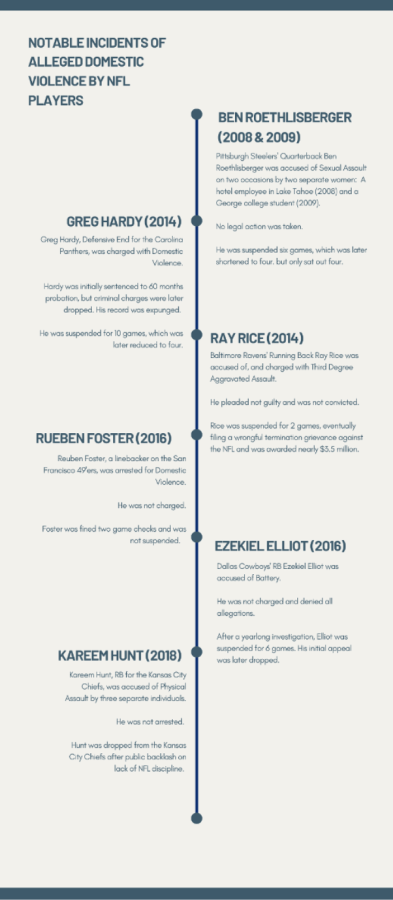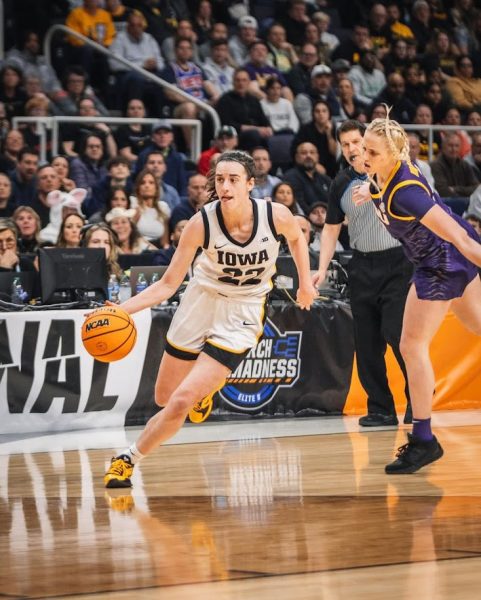The prevalence of domestic violence in the NFL
Perspective
Ex-NFL Player Zac Stacy was arrested on Nov. 18 and charged with aggravated battery and criminal mischief after a home surveillance video surfaced of him beating his partner, Kristin Evans.
Initially, Stacy, a former running back for the New York Jets and the then-St. Louis Rams, fled his home in Nashville, Tenn. when a warrant was put out for his arrest and he was taken into custody in Orlando, Fla.
Stacy has since been released on a $10,150 bond. The judge barred him from returning to Florida outside of court appearances, and he is staying in Alabama with family. Evans’ attorney, Thomas Feiter, disagreed with this release “He saw that horrific video of blatant egregious domestic violence committed on our client… [The release] just doesn’t seem right.”
Fellow players condemned Zac Stacy.
His former Rams teammate, Chris Long, tweeted “Woke up to the Zac Stacy video. Made my stomach turn. Not retweeting [the video]. Crazy to play [with] someone for a couple years & you have no idea what kind of bullshit they do at home.”
Davante Adams, a Wide Receiver for the Green Bay Packers, added “I’m not retweeting the video but ZAC STACY NEEDS TO BE THROWN UNDER THE JAIL. Any man that puts his hands on a woman is a coward. Can’t believe what I just saw.”
Stacy is not an outlier, though. The NFL has long been plagued with incidents of players abusing their spouses or children. Since 2000, 134 players have been arrested for domestic violence and 15 for crimes relating to sexual assault, battery or solicitation, comprising 13% of all NFL arrests, according to a database by USA Today that tracks NFL arrests.
Intimate partner violence accounts for 15% of all violent crimes in the United States. For NFL players, domestic violence is the highest criminal charge at 55% of total arrests made.
Professional athletes must use their body to sustain a career and, due to this, regularly experience bodily harm, specifically head injuries. Chronic Traumatic Encephalopathy (CTE) is a form of traumatic, degenerative brain injury; the symptoms include mental illnesses resulting in substance abuse, decreased social functioning and increased aggression. A study conducted by Boston University found CTE affected the brains of 99% of the 202 NFL players studied. Aggression is a symptom seen in 34% of individuals with CTE.
The average age of NFL players is just 26 years old, with the spread being between 25.5 years and 27.3 These players are set up for brain damage at a very young age, just after the brain becomes fully developed. Injuries are a part of sports and are unavoidable. Still, CTE cannot be the scapegoat; NFL players perpetuating crimes is due to a variety of reasons, such as team culture, minimal action by the justice system, lack of fan backlash and reckless financial spending. The idea that one can “get away with” a crime due to being in a position of power or wealth is enforced by the NFL’s lack of disciplinary response.
The NFL should promote player safety on and off the field to ensure that its players remain law-abiding, ethical individuals.
These young men have enormous influence over younger people who look up to their sports heroes; 72% of children view athletes as role models. Ramifications should be harsher and prove a commitment to inspiring change and raising awareness for these heinous actions.
The National Football League has yet to release a statement regarding Zac Stacy.
However, the National Down Syndrome Society, who partnered with Stacy in 2019 to conduct a football clinic for children with Down Syndrome, said “This terrible act of violence goes against our core values as an organization. Our support goes to the victim and her family.”
Domestic violence has never been––and will never be––acceptable, and it’s time for the NFL to confront their shortcomings.

Lindsay Giovannone is a senior majoring in history and minoring in criminal justice. She has been part of the paper since she was a freshman and has previously...












